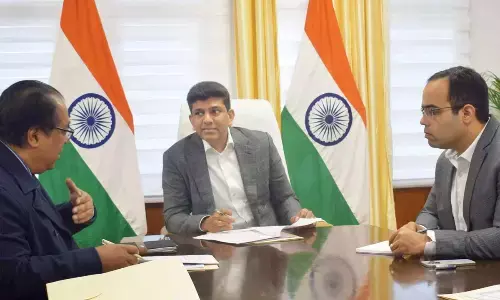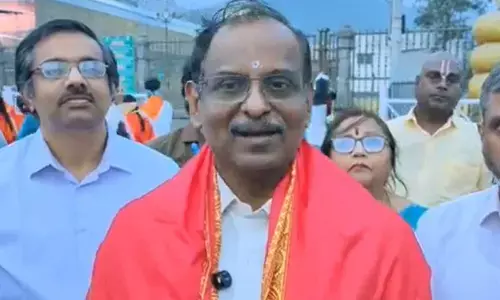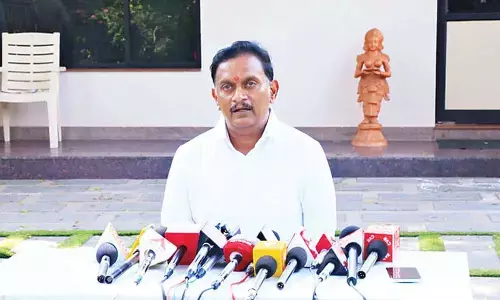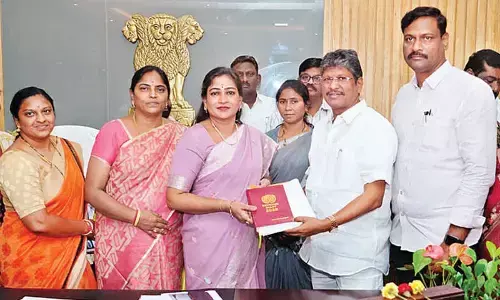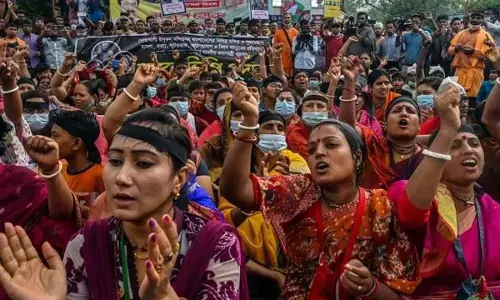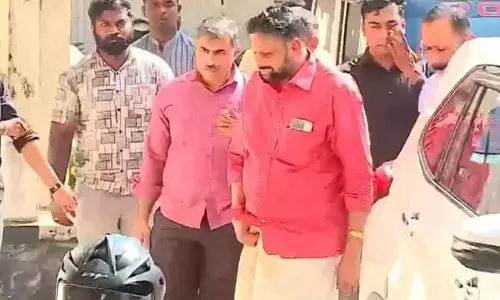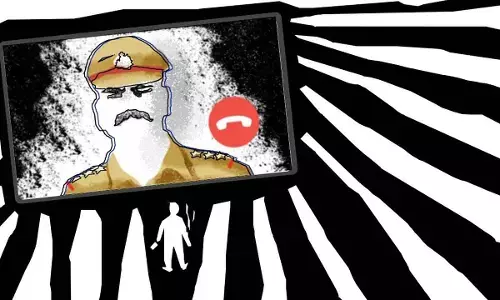The Booster Budget
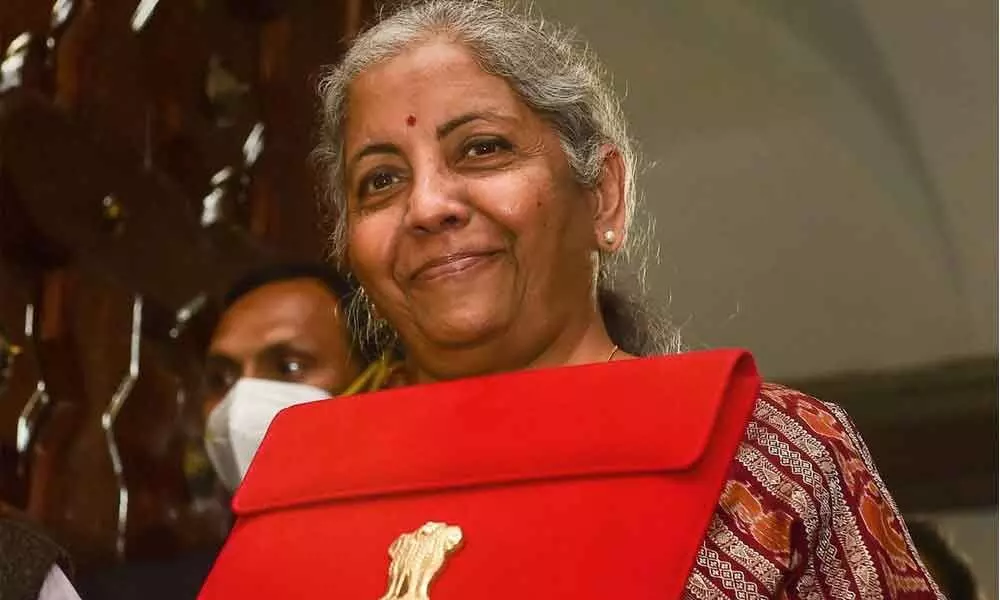
Union Finance Minister Nirmala Sitharaman
Big push to infra, digital currency, 'crypto tax'
Highlights
♦ Digital Rupee to be rolled out by 2023
♦ India to launch sovereign green bonds
♦ Proposes 'One Nation, One Registration'
♦ 5G spectrum auctions to be conducted this year
♦ ECLGS scheme extended till March 2023
♦ Capital expenditure at `7.5 lakh cr
♦ ePassports will be rolled out in 2022-23
`♦ 250 crore for Centres of Excellence
New Delhi: As India emerges from the shadow of the Covid-19 pandemic with an ebbing third wave, Union Finance Minister Nirmala Sitharaman has sought to focus primarily on economic recovery on the back of government spending, which in due course of time is expected to crowd in private investment. In her budget speech, Sitharaman said the budget seeks to lay the foundation and give a blueprint to steer the economy over the Amrit Kaal of the next 25 years – from India at 75 to India at 100. It continues to build on the vision drawn in the budget of 2021-22.
"We are marking Azadi ka Amrit Mahotsav, and have entered into Amrit Kaal, the 25-year-long leadup to India@100," the FM said.
The fundamental tenets of the Budget include transparency of financial statement and fiscal position, and reflect the government's intent, strengths, and challenges, she said.
The Finance Minister did not make any changes with the personal income tax rates in budget 2022-23. There was no raise in standard deduction, which was being widely anticipated by experts, in view of elevated inflation levels and impact of the pandemic on the middle class.
The corporate tax rate too was kept at the same level. However, concessional rate of 15 per cent was extended by 1 year for newly incorporated manufacturing units.
However, it proposes to reduce the minimum alternative tax (MAT) for cooperative societies from current 18.5 per cent to 15 per cent at par with private companies. Sitharaman said the government has also proposed to reduce the surcharge on cooperative societies from the present 12 per cent to 7 per cent for those having total income of more than Rs 1 crore up to Rs 10 crore.
30% tax on digital currency
Giving clarity on taxation of cryptocurrencies and other virtual assets, Sitharaman on proposed a 30 per cent tax on income from transactions in such assets.
Also, to bring such assets under the tax net, she proposed a 1 per cent TDS (tax deducted at source) on transactions in such asset classes above a certain threshold. Gifts in crypto and digital assets will also be taxed, she said.
The tax proposals will come into effect from April 1 after the passage of the Union Budget in Parliament.
Digital rupee on anvil
It was proposed in the budget the introduction of digital rupee by the Reserve Bank of India (RBI) using blockchain technology starting from FY23. The introduction of a central bank digital currency will give a big boost to the digital economy. Digital currency will also help in the currency management system, Sitharaman said.
"Digital currency will also lead to a more efficient and cheaper currency management system. It is therefore proposed to introduce digital rupee using blockchain and other technologies to be issued by the Reserve Bank of India, starting 2022-23," she added.
Increased window for ITR
Individuals with income above Rs 2 crore get some relief in the form of capping of surcharge at 15 per cent on long term capital gains (on specified assets) from existing graduated rates. Besides, a one-time window to taxpayers to correct any discrepancy or omissions in their ITRs within two years of filing, subject to payment of taxes.
E-passports
The Union government will start issuing e-passports this year, which will include electronic chips, the Finance minister said. The e-passports will use Radio Frequency Identification and biometrics, and the electronic chip will contain important security related data encoded within it.
National highways
Sitharaman said national highways will be expanded by 25,000 km during 2022-23 and the national ropeway development programme will be taken up in the public-private partnership (PPP) mode. She also said contracts for the implementation of multimodal logistics parks at four locations through the PPP mode will be awarded in 2022-23. She said Rs 20,000 crore will be mobilised through innovative ways of financing to complement the public resources.
The Finance Minister also proposed enhancing the funding under the PLI scheme for domestic solar cells and module manufacturing to Rs 24,000 crore from the existing Rs 4,500 crore to make India an exporting nation.
PM Gati Shakti
PM Gati Shakti National Master Plan is a transformative approach for economic growth and sustainable development and is driven by seven engines — roads, railways, airports, ports, mass transport, waterways and logistics infrastructure.
All seven engines will pull forward the economy in unison, Sitharaman said while presenting the Budget for 2022-23. The approach is powered by clean energy and Sabka Prayas (efforts of the central government, the state governments and the private sector together), leading to huge job and entrepreneurial opportunities for all, especially the youth, Sitharaman said in her Budget Speech.
ECLGS scheme for MSMEs extended
The Emergency Credit Line Guarantee Scheme (ECLGS) that provided much needed additional credit to over 1.3 crore MSMEs will be extended till March 2023 with its guarantee cover expanded by Rs 50,000 crore to Rs 5 lakh crore, Sitharaman said. Besides, to help the micro, small and medium enterprises (MSME) sector become more resilient, competitive and efficient, Sitharaman said a Raising and Accelerating MSME Performance (RAMP) programme will be rolled out with a Rs 6,000 crore outlay spread over 5 years.
KEY ALLOCATIONS
1. Fiscal deficit
The government's planned fiscal deficit (basically how much expenditure exceeds revenue by) for the upcoming financial year has been set at 6.4% of GDP. That's less than both what was planned – 6.8% – and achieved – 6.9% – in the previous financial year.
2. Education
The last few years have been difficult for students across the country, as the Covid-19 pandemic led to long school and college closures. In the last financial year, the government spent less on education (Rs 88,002 cr) than it had originally planned (Rs 93,224 cr). This year, the government says it will spend Rs 1,04,278 cr on education – but it remains to be seen if this will go to making sure schools are in a good enough condition to be reopened and convincing students to return.
3. MGNREGS
As the pandemic led to large-scale unemployment over the last few years, the demand for work under National Rural Employment Guarantee Scheme has been going up.
That last year's allocation was not enough seems clear to even the government – after planning to spend Rs 73,000 crore under the scheme, it ended up spending Rs 98,000 crore. Despite this knowledge, it has again planned to spend the original amount from last year – Rs 73,000 crore.
4. Rural development
Another area where the government has not increased planned spending commensurately despite overshooting the same amount last year is rural development. The allocation to the rural development for the next year is Rs 1,38,203.63 crore, though last year it spent a total of Rs 1,55,042.27 crore.
5. Health and family welfare
Covid pandemic has had a devastating impact on the country's already-fraught healthcare services for the last 2 years. Last year, the health ministry ended up spending more than originally allocated. Now, the government has decided to slightly increase on that revised expenditure (Rs 86,000.65 crore) for the coming financial, at Rs 86,200.65 crore.
6. Food subsidies
The budgetary allocations to food subsidies – which includes the public distribution system – has gone down substantially. While the government spent Rs 2,99,354.6 crore on food subsidies last year, it plans to spend far less – Rs 2,07,291.1 crore – this year.
7. PM Poshan/Midday Meals
This year's allocation to the midday meals/PM Poshan Scheme is the same as the revised expenditure for last year (Rs 10,234 crore) – and less than what was planned for spending last year. If the government is serious about reopening schools and encouraging children to return, the midday meal is an important part of that, as well as for the overall betterment of nutritional outcomes.
8. PM Kisan
The allocation for PM Kisan has broadly remained the same, largely because the scheme involves disbursal of a fixed amount of money to a mostly unchanging number of farmers. However, as experts have noted, by not increasing the quantum of payment, the real value of PM-KISAN transfers, which were started in interim Budget of 2019-20, has fallen by 15.5% in the quarter ending December 2021.








